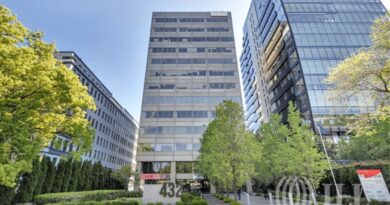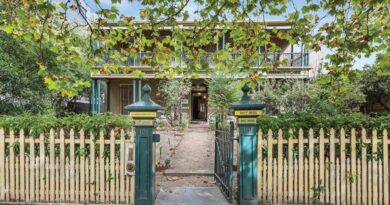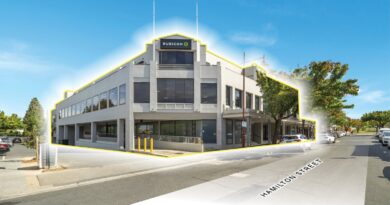Owning Property to Live Off, Rather Than Live in
The apartment is likely to be put onto the rental market, where it is expected to be occupied quickly, and start returning the new investor an income.
This activity is only expected to intensify, according to agents, as volatility in the sharemarket drives more people to bricks and mortar.
Rising rents, which lead to rising house values, have prompted an army of investors to come out to play in late 2009, as it did in 2007.
“I’ve been in the industry for over 10 years now and can honestly say that this year (2007) has been the best start to a real estate year I’ve ever seen,” says Gary Walton, director of Hocking Stuart Carnegie. “With investors on board, it’s far surpassed 2002, which was widely regarded to be the best year on record.”
Many buyers are traditional property investors – those who may own their family home and have an established property portfolio.
In other cases, cashed-up first-time investors are doing the bidding, taking advantage of tax and depreciation benefits, which make it more attractive to buy a property to live off, rather than live in. It would appear to be the modern version of the great Australian dream.
A strong economy, which has resulted in record end-of-financial-year bonuses for some and massive returns from the stockmarket, is also boosting the number of buyers looking at real estate. That is a key reason for increased demand for rental properties from high-earning professionals and couples.
Take the once-troubled inner-city markets of Docklands and Southbank. As little as two years ago, analysts tipped that vacancies could be as high as 30 per cent in some apartment towers.
Many investors who had bought apartments during construction quickly sold them once they were complete. Agents say vendors feared a mass oversupply of apartments would not only reduce the amount investors could earn in rent, but also affect the property’s value.
Those who bought in this fear-led exodus, as well as those who held on to their apartments, are having the last laugh, with the two precincts now hot property for both investors and renters.
According to the latest research by the Real Estate Institute of Victoria, the median price of Docklands apartments increased 8 per cent for the year ended December 2006. In Southbank, it increased 6.1 per cent, and 29.2 per cent since 2002.
“A couple of years ago, a few investors vacated the market on the basis that returns weren’t that fabulous, and they could put their money in the stockmarket,” says Tom McCarthy, director of Biggin & Scott in Prahran. “With the rental market now on the rise after seven years in the doldrums, a lot of investors are taking advantage and getting on the elevator ride of what we believe will be the next growth area in real estate, residential property.”
Mr McCarthy says stockmarket volatility, as seen recently, usually augurs well for residential property. “When sharemarkets become turbulent and uncertain, investors prefer the security of things they can touch and drive past, like real estate.”
Mr McCarthy says most property investors in the inner southern suburbs are aged in their late 20s and early 30s.
“They expect that they will only be earning more in their lifetime, not less,” he says. “Stability is the backbone of their decision.”
Agents say there is an increasing number of more established property investors, who can use the equity they have in their current homes to invest in more real estate.
“These investors are attracted to increasing rents and vacancy which is at record lows,” Mr Walton says.
“Recent interest-rate rises have made some first-home buyers think twice about getting into the market, but they did little to dampen interest by investors.”
He says investors are well versed in the tax savings they can claim by negative-gearing property.
The Federal Government reintroduced negative gearing in 1987 to promote self-funded retirement by investors.
Negative gearing enables people to borrow money to undertake investment opportunities that would otherwise have been beyond their reach financially.
A property is negatively geared when the costs of owning it – interest, bank charges, maintenance, repairs and depreciation – exceed the income it produces.
If, for example, rental income on an investment property is $1000 a month (about $230 a week), but interest repayments and other expenses total $1500 a month, the $500 shortfall can be claimed as a tax deduction.
The amount an investor can claim back from the government depends on the income they earn for that year.
Buyers of new or renovated property, such as an inner-city apartment, can also claim “depreciation” of the asset, and its fixtures and fittings, for the first few years of ownership. The amount the property depreciates, which is measured on a sliding percentage scale, can also be claimed as a tax deduction when negative gearing.
The tax savings that can be made by owning an investment property has opened up all sorts of opportunities for those looking to build a property portfolio.
The most common type of investments are inner-city apartments. Valuers say the average “return on investment” from this type of investment properties ranges between 4 and 5 per cent, depending on the area.
If, for example, an investor buys a one-bedroom apartment for $250,000 and the property returns $10,400 a year ($200 a week) in rent, the return on investment is 4.2 per cent ($10,400 divided by $250,000).
Although this return is lower than standard interest rates (which are about 7 per cent), investors are able to claim the shortfall between the rent they earn and the interest they pay as a tax deduction.
In most cases, when a property starts paying for itself (i.e. the rent received covers the interest payable), investors may borrow against that property to buy another, which they can negatively gear on again. Once again, an investment property or portfolio must make a loss for an investor to claim a tax benefit.
The concept of negative gearing has raised awareness of alternative types of property investment, including student accommodation, serviced apartments and, to a lesser extent, commercial property including offices, factories and shops.
Property consultancy Charter Keck Cramer reports that the number of international students coming to Victoria has increased dramatically over the past 10 years. It says 51,000 international students were studying at higher education institutions in 2005, compared to 10,500 in 1997.
The bulk of students studied at Monash University, but the University of Melbourne, RMIT and La Trobe also attracted considerable numbers.
An array of new student accommodation complexes surrounds these university campuses, and these are proving popular with “mum and dad” investors.
Student accommodation units typically offer investors higher returns than a standard apartment (averaging between 6 and 7 per cent) – however, they also carry a greater element of risk.
The amount an investor must pay in outgoings (general maintenance) for most student accommodation complexes is higher than for most traditional apartments.
Furthermore, as student accommodation units are smaller than 50 squares, most banks will not lend more than 80 per cent of an apartment’s value to a borrower.
This could make the investment harder to sell if and when an investor decides to do so, as the pool of potential buyers able to buy the property is smaller.
Serviced apartment complexes, which are often sold with long leases to serviced apartment chains, such as Quest or Oakford, are another popular investment type.
Like student accommodation, serviced apartments require the owner to contribute to the upkeep of the property. As serviced apartments include furniture packages, the upkeep of these investments is usually higher than for a traditional apartment.
This is one reason serviced apartments, on paper, are often seen to earn more rent than a traditional apartment.
Agents warn buyers of student accommodation and serviced apartments to factor in the above-average costs when considering buying.
A NEW LEASE ON LIFE:
If you plan to sell your home, to downsize and buy an investment property, sit and do the maths.
There are simple ways to add value to your property that could make it attractive to renters, making it an investment that pays for itself.
Accountants say it makes financial sense to reinvest in a property, particularly if you are in a suburb that is popular with renters.
Agents say the value increases by far more than it costs for extensions, kitchens, bathrooms, paint and flooring.
If you only have a little money to play with, target the kitchen.
Improvements can be made from something as simple as changing cupboard handles and benches, to a renovation that would include new tiles and appliances.
Replacing carpets or polishing floorboards in living areas and bedrooms are other popular ways to refresh your home and boost not only its value but also the amount it can achieve in rent. A paint job and a garden tidy make a good first impression – and all expenses are tax-deductible.








